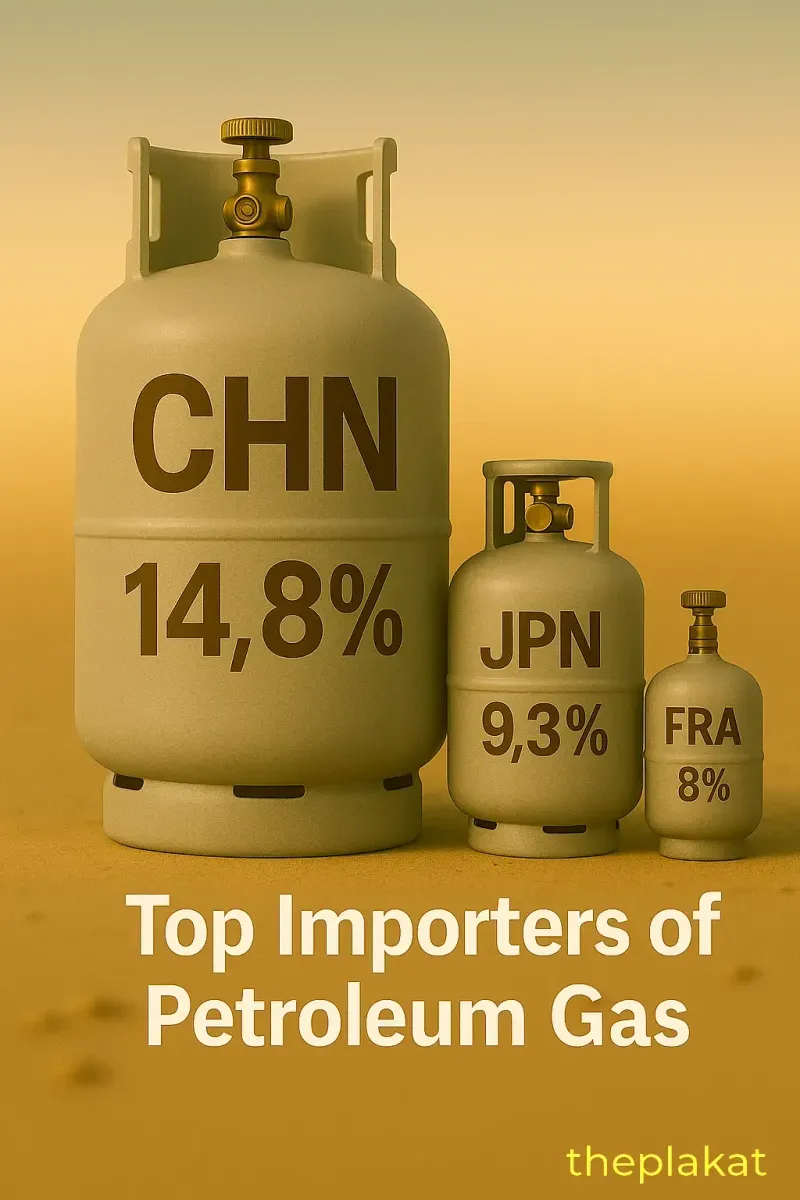Published
in Economy
With countries vying for a secure and sustainable energy future, petroleum gas importation remains a critical aspect of global trade in 2023. This report delves into the top importers worldwide, examining their strategies and market shares.
Petroleum gas serves as an essential energy resource around the world, fuelling industries, domestic heating, and serving as a cleaner alternative in energy generation. Its demand has surged due to industrialization and urbanization trends globally.
Leading the charge in 2023, China, with a 14.80% share, validates its role as a primary importer of petroleum gas. Japan and France contribute significantly, drawing 9.29% and 8.03% respectively, with Italy and Germany not far behind. Their energy policies and industrial bases drive these import requirements.
The import figures of other countries, though smaller in individual percentages, cumulatively underscore a diversified importer base. Emerging markets in Africa and parts of Latin America show growing interest, yet they remain relatively minor players as their markets develop.
Some deviations in data reveal emerging trends such as the increased South Asian participation in gas imports, aligning with their growing energy consumption rates. On a lighter note, the rest of the countries, combining various minor importers, reflect a dynamic yet small-scale import market.

China, Japan, France, Italy, and Germany are some of the top importers of petroleum gas in 2023.
Petroleum gas importation is crucial due to its role in energy generation, industrial uses, and as a low-emission fuel source contributing to global energy security.